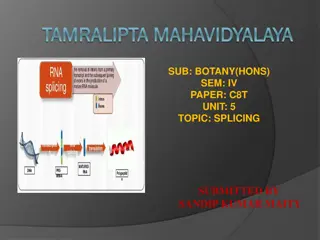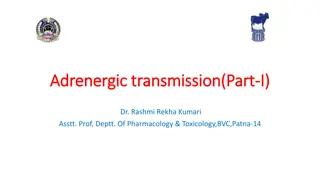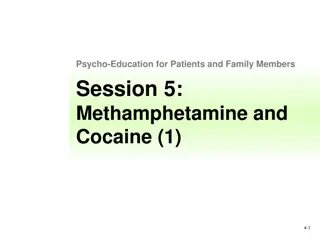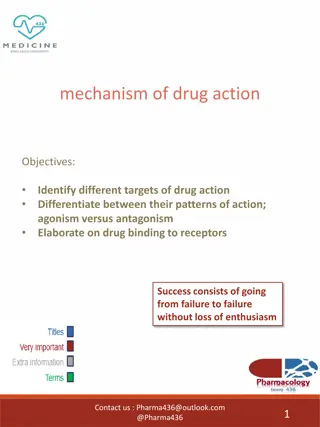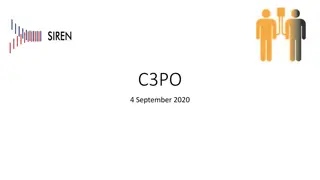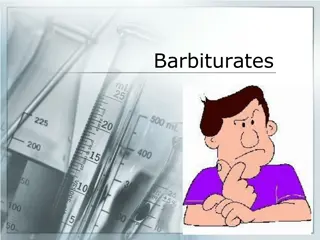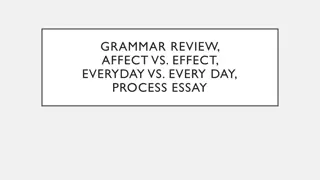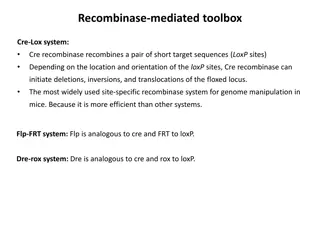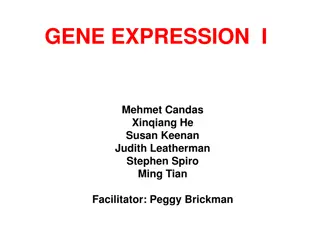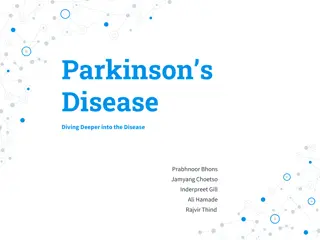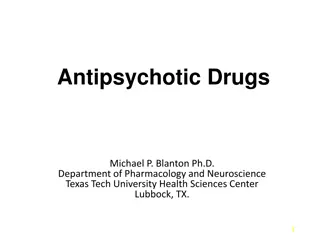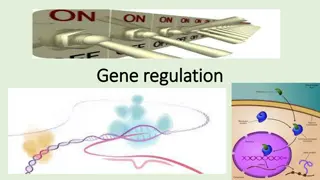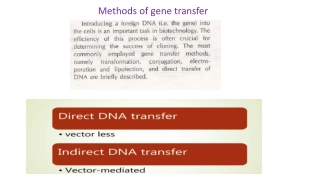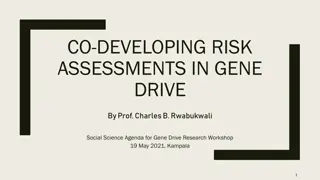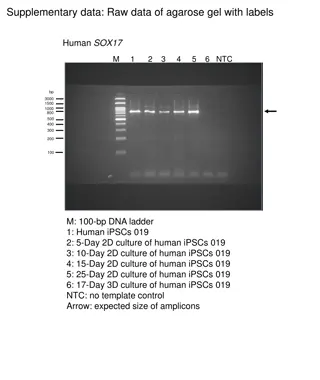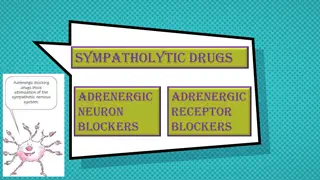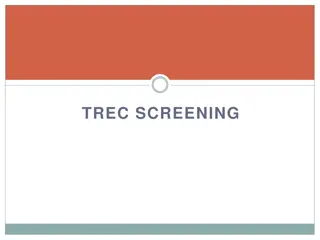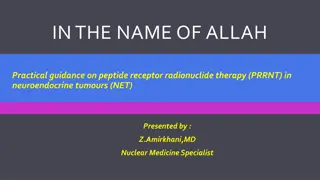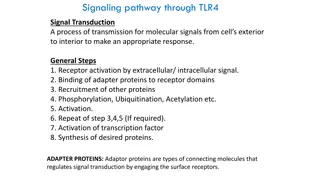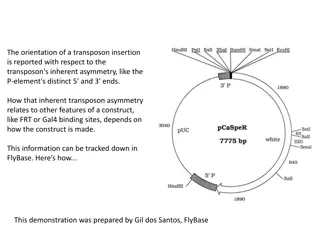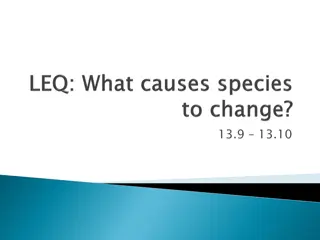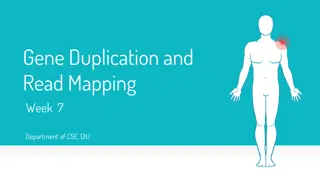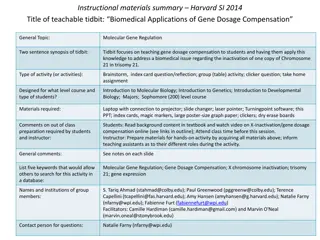Understanding Splice Sites and Splicing Elements in the Inhibitory Dopamine Receptor Gene (D2)
In this project, the focus is on identifying splice sites relevant to the inhibitory dopamine receptor gene (D2). The problem involves finding splicing elements within a specific range of known splice sites in the gene. The data provided includes the D2 gene entry in FASTA format, a database of splicing factors, and splice sites from the genbank entry. The solution proposed involves using dictionaries to organize and interpret the results for a more in-depth analysis.
Download Presentation

Please find below an Image/Link to download the presentation.
The content on the website is provided AS IS for your information and personal use only. It may not be sold, licensed, or shared on other websites without obtaining consent from the author. Download presentation by click this link. If you encounter any issues during the download, it is possible that the publisher has removed the file from their server.
E N D
Presentation Transcript
Finding splice sites With particular interest given to the inhibitory dopamine receptor gene (D2)
Whats the problem? How did I solve it? What did I find? Would you like to know more?
Pre mRNA needs to get cut in an ordered fashion So splicing elements cue splicing factors to splice. This can be regulatory
Alternative splices of pre mRNA The same gene can code for several different proteins This must be signaled in some way Looking for the specific elements involved in this could indicate mechanism.
The problem: Given a gene, a set of known splicing elements, and a set of known splice sites, output the splicing elements found within a given range of the sites in the gene Do it in a way which is interpretable
The data: The D2 gene entry on genbank in fasta form A database of splicing factors with details including splicing element, known target gene, organism, etc. Splice sites from the genbank entry on the D2 gene (cut and pasted I know, so lame.)
The solution: My program! Dictionaries for days A look up function which can be used to look up the results and output what they might mean Not that complex, but there is just so much you might want to be able to do making all of that possible and still generating something useful is what gets hard.
More details you ask? Split the genome up into sections of a given range by splice site Look for each motif in the data set in each section Output a dictionary of dictionaries Dict. Of Splice sites Dict. of found motifs List of locations of hits Look up the found motifs and output something more interesting Turn the data set into a dict. of dict. of catagories Look up the specific category of the specific motif and output the value Yay! Profit!
A brief history of D2 Inhibitory dopamine receptor involved in negative feedback loop behind cocaine tolerance in the midbrain Long and short form alternative splicing factors (exon 6 is variable) Alternative splicing implicated in tolerance response.
Nothing obviously different about 6th exon splice sites But Wait for it:
Something cool!! (maybe) GluR2 receptor also implicated in cocaine tolerance Splicing elements which have been observed in alternative splicing of GRIA2 gene are present near most of the D2 splice sites This is not a likely occurrence.
So maybe The same protein or set of proteins is responsible for both the D2 and GluR2 responses to cocaine Vuala. Science is true.


